Amazing zone Malaysia trip
10 best places to visit in Malaysia
Just a short drive away from the capital, there are plenty of things to do-from islands, mountains, and record-breaking caves, to countless temples and a unique chance to explore the fauna-rich jungle of Borneo.
Malaysia is also a popular destination for snorkeling and scuba diving, with beautiful coral reefs and soft sandy beaches that regularly make top destinations lists.
For more ideas on how to spend your time, see our list of top tourist attractions in Malaysia.
1. Petronas Twin Towers, Kuala Lumpur
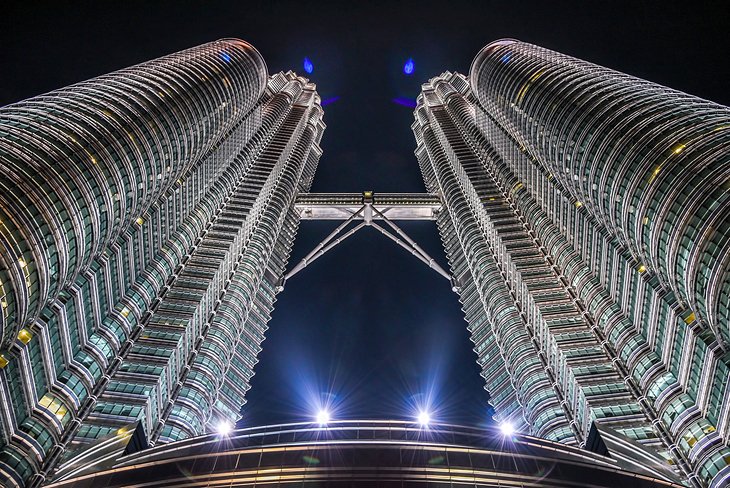
The tallest twin towers in the world, the Petronas reach an impressive 452 meters high up into the clouds. The towers are 88 floors tall and have an impressive total of 76 elevators.
Built using reinforced concrete, steel, and glass, the two towers are connected to each other by a double skybridge on the 41st and 42nd floors. Visitors can make their way up here for stunning views of KL and the 6.9-hectare KLCC Park below-the views are particularly impressive at night.
While most of the floors on the towers are rented to companies-IBM, Microsoft, and Huawei Technologies all have offices here-the bottom floors of the towers are reserved for Suria KLCC, one of the largest shopping centers in Malaysia. With over 300 stores, an art gallery, and even space for a Philharmonic Hall, this retail and entertainment space will keep visitors occupied for hours.
2. Batu Caves, Selangor
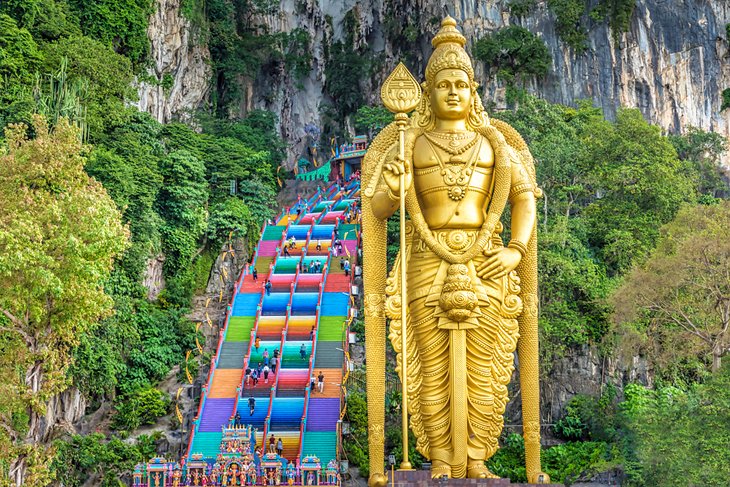
Located less than an hour outside Kuala Lumpur, the Batu Caves complex consists of three main caves plus a series of smaller ones, most of them containing statues and 100-year-old shrines dedicated to Hindu gods.
The main cave, known as Cathedral Cave, is at the top of a massive colorful staircase-make it all the way up the 272 steps, and you'll find a space decorated with statues, altars, and lights. At the bottom of the stairs, a 43-meter-tall gold statue of Lord Murugan welcomes visitors.
Visitors are allowed to explore the caves on their own or can join a guided tour to learn more about the caves. During the Hindu festival of Thaipusam in January, thousands of people flock to the cave for the celebrations.
3. Mount Kinabalu, Sabah
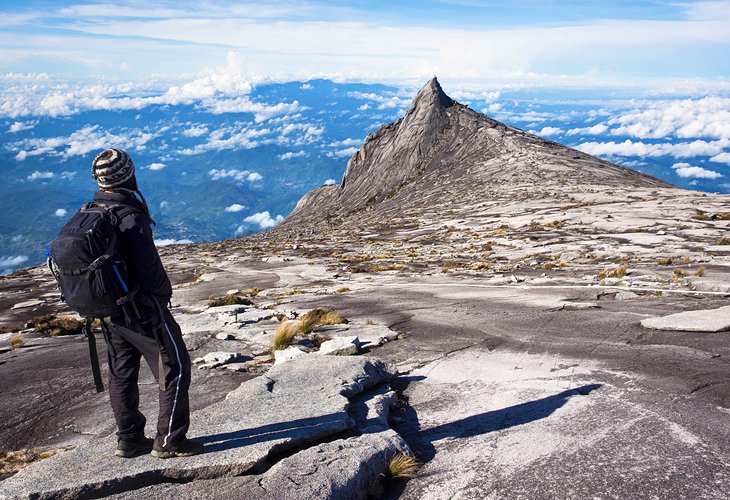
At just over 4,000 meters high, Mount Kinabalu is the tallest mountain in Malaysia. The mountain is part of Kinabalu Park, one of the oldest national parks in Malaysia and a UNESCO World Heritage Site. Because of its unique ecosystem mixing alpine meadows, grasslands, and shrublands, Kinabalu is home to an impressive range of both plant and animal species, including the threatened orangutans.
Mount Kinabalu is a major destination for climbers-but summiting here can be tricky. Only 185 climb permits are issued daily by the park, and visitors must make accommodation reservations and hire a mountain guide in advance in order to be allowed to hit the trails. Although people under 16 are allowed to join climbing groups, there are restrictions in place.
Climbers should plan a stay at the Kinabalu National Park before attempting the climb-since the park itself is already at an altitude of over 1,800 meters, this will allow for acclimatization before attempting to reach the peak.
4. Perhentian Islands
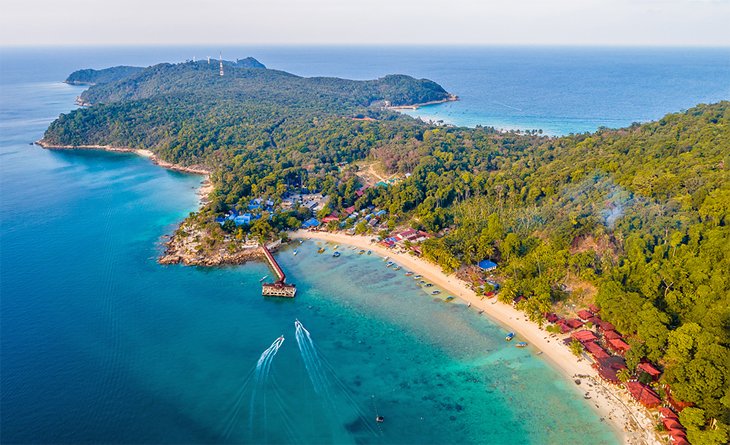
Once a stopping point used by traders traveling around Southeast Asia, this group of small islands is part of a marine park and has become a major tourist destination in northeastern Malaysia. Most of the islands can be accessed by either ferry or small motorized boats, although only the two larger islands offer accommodations, shops, and amenities-of these two, Pulau Perhentian Besar has more of a backpacking scene, while Pulau Perhentian Kecil is a little more upscale and family-oriented.
While you can hop on a water taxi to move from one beach to the next here, it's also possible to follow the island's walking trails instead-a much-recommended option as you get to trek through jungle paths and get open stunning views of the water along the way.
Scuba diving, snorkeling, and kayaking are popular activities here, but visitors can also volunteer in turtle conservation programs and get unique access to the areas where turtles come to lay eggs.
5. Sipadan Island
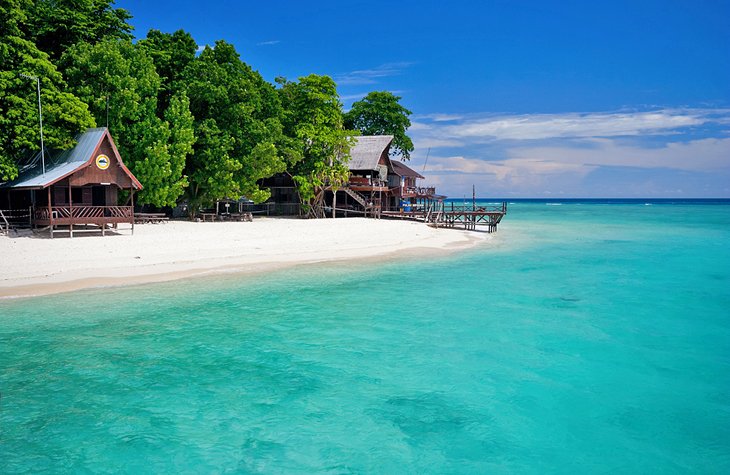
Sipadan Island and its surrounding ocean waters are part of the world's richest marine habitat, home to endangered hawksbill turtles, whale sharks, monitor lizards, and hundreds of coral species. The island is also considered one of the best diving destinations in the world and is fiercely protected-visiting requires a permit in advance and only 120 permits are given out per day.
Reaching the island requires an hour-long ride on a speed boat. Once here, the island can be easily explored on foot, with different beaches and reef sites within minutes of each other.
Since it's no longer possible to stay on the island because of environmental protection laws (the nearby Mabul Island offers accommodations), visitors usually come here early in the morning as part of snorkeling and diving tours. All visitors must leave the island by 3pm.
6. Gunung Mulu National Park, Sarawak
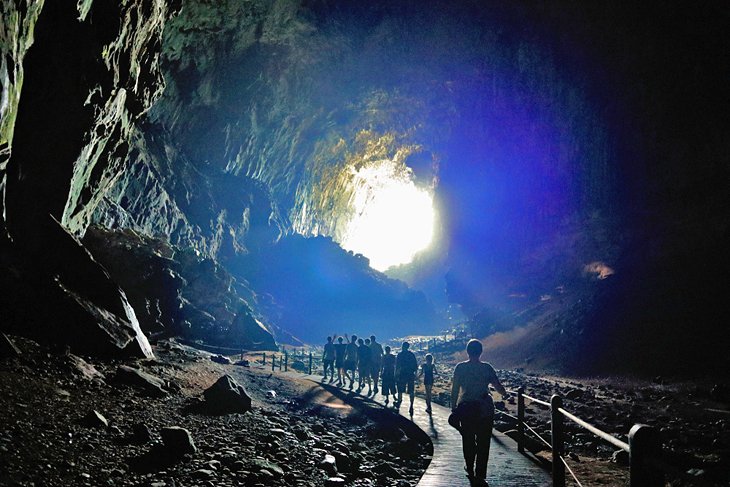
This UNESCO World Heritage Site might be more famous for its impressive karst limestone pinnacles that resemble people standing in large formations, but the park's massive caves are just as stunning.
Thick rain forest covers most of the park and makes some areas difficult to access-one of the reasons some of the caves here weren't really explored until the 1970s. Another reason is how massive the cave systems are: both the largest passage and the largest underground chamber in the world are located in caves here.
Deer Cave is particularly beautiful, with ceilings over 122 meters tall, waterfalls cascading through the rocks, and an opening over a sinkhole that's over one kilometer wide. Visitors to the park can also trek up to the Sarawak Chamber and Paku Waterfall or try a climb up on The Pinnacles Summit Trek, which takes three days and involves ropes, ladders, and an arduous walk through the jungle.
7. Penang Hill
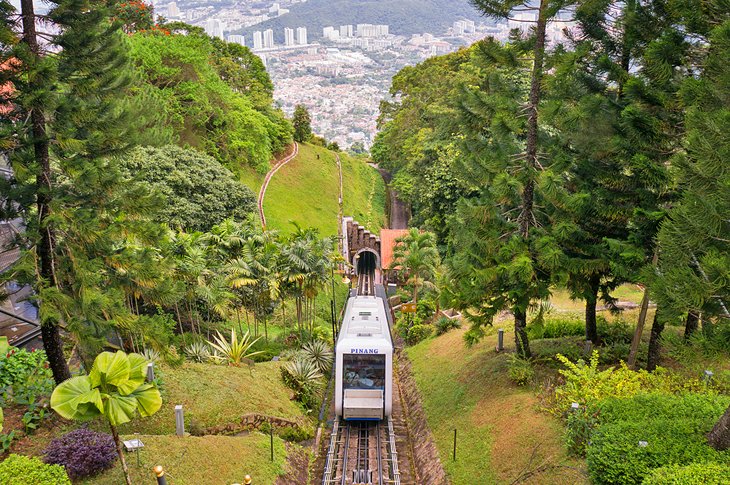
The top of Penang Hill can be reached via the Penang Hill Railway, an air-conditioned funicular that makes the 2,007-meter-long climb up in five to 10 minutes. Although there are mid-stops between the base station and the highest point, these are done only on request and mostly used by residents who live at those stops.
The top of Penang Hill offers beautiful green views over the city and is home to the Habitat Penang Hill, with a 1.6-kilometer nature trail cutting through the rain forest and a number of tropical gardens; a canopy walk 40 meters up in the sky; ziplines; and the Skyway, which offers three viewing decks and a 360-degree view of the bay and islands.
- 8. Sepilok Orangutan Rehabilitation Centre, Sandakan
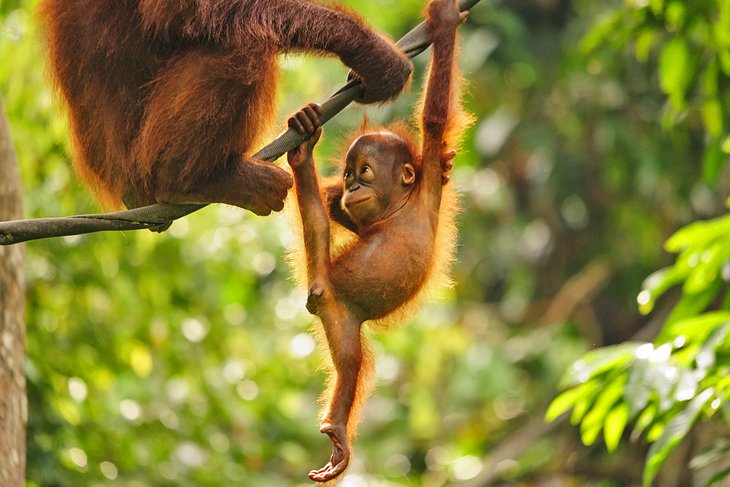
The Sepilok Orangutan Rehabilitation Center was founded in 1964 to help orphaned orangutan babies rescued from the pet trade or saved from illegal hunting. The center's main goal is to help these orangutans learn how to survive in the wild (in fact, replacing what they would usually learn from their mothers), so they can be eventually released into the Kabili-Sepilok Forest Reserve, which is covered in virgin forest and extends for 4,300 hectares around the rescue center. Over 80 orangutans currently live free in the reserve.
While visitors cannot interact with the animals or approach them, they can come to the center to learn more about orangutans and the challenges they face today, see the nursery and the climbing area through a glass window, and attend feeding times (seen from a platform) twice a day.
The boardwalk that cuts through the center offers plenty of opportunities to explore and see the orangutans playing and jumping around on the trees nearby.
9. Kek Lok Si Temple, George Town
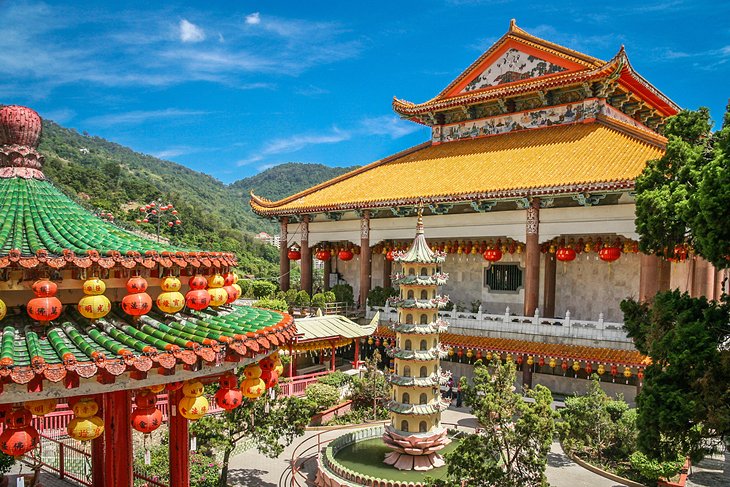
Malaysia's largest Buddhist temple sits on a hill, at the bottom of Air Itam mountain. As Asian temples go, Kek Lok Si is relatively new, as construction began in 1890-but the massive seven-story Pagoda surrounded by 10,000 Buddha statues make this a striking destination that can't be missed.
Surrounded by gardens, fish ponds, prayer halls, and a number of stalls selling both religious and secular souvenirs, the pagoda is also home to a 36-meter-tall statue of Kwan Yin, the Buddhist goddess of mercy.
The temple attracts many visitors from all around Southeast Asia who come here to "make merits" but also to see one of the most important pilgrimage sites in the area. Chinese New Year celebrations are particularly beautiful at the temple, as the entire space is decorated with thousands of lanterns.
10. Cameron Highlands, Pahang
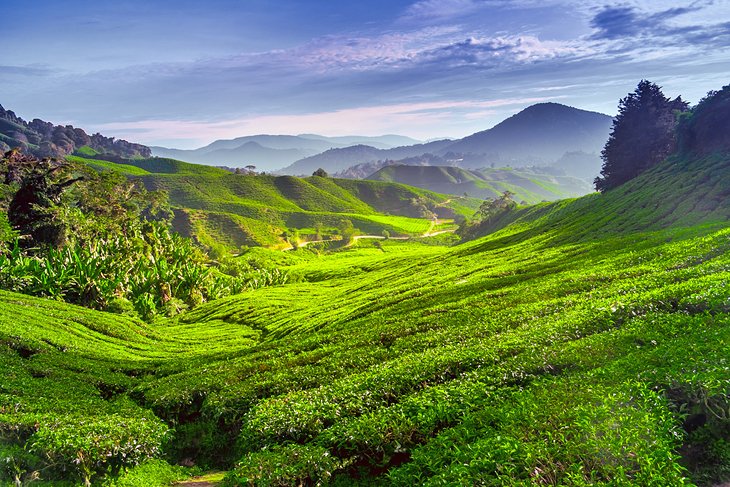
A stunningly emerald green hill station, the Cameron Highlands cover an area of over 712 square kilometers. The main attraction here is the tea estates, a legacy from British colonial times. The area, however, also offers orchards; lavender farms; and plenty of opportunities to hike through the local mossy forest to reach aboriginal villages, waterfalls, and lakes.
Both locals and visitors head here to enjoy the cooler climate and experience a true high-tea experience in places like the Boh Sungei Palas Tea Estate, where you can not only tour the plantation but also see the tea-making process, sit at the café, and stock up on goodies at the gift shop.
The Cameron Highlands area is also the native domain of the Rafflesia, the largest individual flower on Earth, which grows directly on the ground and can reach a diameter of over 100 centimeters.
Comments
Post a Comment